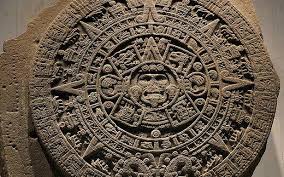Kalendarz w Babilonii

Babilończycy odegrali wielką rolę w rozwoju rachuby czasu. Oni też uchodzą za twórców chronologii opartej na systemie księżycowym.
Rok babiloński, ustanowiony przez boga Marduka, składał się z 12 miesięcy, liczących po 28 dni. Rok miał więc zaledwie 336 dni. Wkrótce jednak stwierdzono pomyłkę boga, ustalając miesiąc synodyczny na 29,5 dnia. Babilończycy zaokrąglali go do 29 dr}i i w ten sposób powstał rok 348-dniowy.
Ale porządek zjawisk przyrody na Ziemi nie wiąże się z ruchem Księżyca. Lato, jesień, zima i wiosna występują w odstępach rocznych, a nie miesięcznych. Astronomowie, którzy przyjęli księżycową rachubę czasu, mieli więc nie lada kłopoty.
W Babilonii różnica między rokiem słonecznym a księżycowym wynosiła aż 17,25 dnia. Łatwo sobie wyobrazić, jaki zamęt w życiu wywoływał taki kalendarz. Pory roku nie występowały we właściwych okresach, lecz w różnych miesiącach. Kalendarz ten, zamiast ułatwiać życie, wprowadzał jedynie komplikacje.
Aby temu zaradzić, kapłani postanowili dodawać po 1 dniu do co drugiego miesiąca. Pomysł wydawał się dobry i po pewnym czasie babilońskie miesiące I, III, V, VII, IX i XI liczyły po 30 dni, pozostałe zaś — po 29. W ten sposób uzyskano rok liczący 354 dni.
Był on oczywiście lepszy od poprzedniego, ale nadal daleki od zwrotnikowego. W tej sytuacji zdecydowano się na dalszą reformę: co kilka lat, kiedy niezgodność roku księżycowego ze słonecznym stawała się zbyt oczywista, dodawano na końcu roku trzynasty miesiąc 30-dniowy. Rok babiloński liczył więc od 354 do 384 dni — wedle potrzeby.
Niestety, Babilończycy nie byli konsekwentni w tym działaniu. Trzynasty miesiąc dodawali początkowo co trzy lata (nie ratowało to oczywiście sprawy: 4 lata słoneczne mają mniej więcej 1461 dni, natomiast 4 lata babilońskie w tym cyklu — 1446). W pewnych okresach 13-miesięczne lata biegły siłą rozpędu, rok za rokiem; w innych — zapominano o nich zupełnie. Zapominano nawet o rejestracji lat lub zapisywano je od nowa, od jakiejś nowej ery. Słowem — bałagan trwał, a jego konsekwencje ponosimy do dziś: cofnięcia i zahamowania kalendarzowej rachuby czasu tak poplątały chronologię babilońską, że czasem trudno się w niej połapać. Dopiero w V w. p.n.e. wprowadzono — przynajmniej w zakresie rejestracji lat — pewien porządek. W IV w. p.n.e. natomiast zdecydowano się na regularną interkalację, czyli dodawanie 13 miesiąca. Występowała ona w cyklu 19-letnim, zawierającym 7 lat przestępnych (13-miesięcznych). Oczywiście nie rozwiązywało to problemu, ale wprowadzało już do chronologii pewien ład.
Miesiące babilońskie zaczynały się z chwilą pojawienia się pierwszego światła młodego Księżyca, a więc w pierwszym dniu (ściślej — pierwszego wieczoru) po zakończonym nowiu. Procedura tego była dość niezwykła. Wszyscy Babilończycy byli zobowiązani moralnie 29 dnia każdego miesiąca poszukiwać na niebie władcy nocy. Jeśli go nie zauważono, powtarzano obserwacje następnego dnia. Kto pierwszy zauważył księżycowy sierp, spieszył do świątyni, by zawiadomić o tym kapłana. Wówczas ze szczytu budowli rozlegały się dźwięki trąb. Tak rozpoczynał się nowy miesiąc!
| A oto ich nazwy: | ||||||||||||||||||||||||
|
Miesiące dzielili Babilończycy na tygodnie. Przypuszcza się, że w ogóle oni je wymyślili, jak również podział na 7 dni i ich nazwy. Od Babilończyków wywodzi się też sobota — Szabbatan — dzień początkowo uważany za feralny, dzień „tabu”, w czasie którego nie należało nic robić. Dlatego w Babilonii, a potem u Żydów, sobota stała się dniem wypoczynku.
Nowy Rok rozpoczynał się pierwszego dnia Nissanu, czyli kwietnia, kiedy występował heliakalny wschód Barana, co zbiegało się z czasem wiosennego zrównania dnia z nocą.
